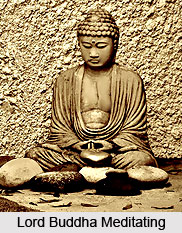 Mudita is one of the five kinds of Bhavana or meditation according to the Buddhists. Mudita is one of the meditation systems in which the Buddhist priests are required to get engage.
Mudita is one of the five kinds of Bhavana or meditation according to the Buddhists. Mudita is one of the meditation systems in which the Buddhist priests are required to get engage.
The word Mudita means joy or delight in other people good fortune. The word Mudita is usually interpreted as sympathetic or selfless joy. This is a kind of gratification that comes from delighting in other people`s well being rather than envying it. Buddhist teachers figure out Mudita as an inner spring of infinite joy that is available to everyone at all times, regardless of circumstances. The more deeply one drinks of the spring of Mudita, the more secure one becomes in one`s own profuse happiness. It then becomes easier to take pleasure in the joy of other people as well.
The conventional example given to refer Mudita is the attitude of a parent observing a growing child`s accomplishments and successes. Mudita is also regarded as the most difficult of the brahmaviharas, the four immeasurable to develop. To show Mudita is to celebrate happiness and achievement in others even when one is facing tragedy in oneself.
The main rivals of Mudita are jealousy and envy. The two mind-states is an opposition. Mudita`s another enemy is a quality, which superficially resembles Mudita but is in fact more subtly in opposition to it, is exhilaration, perceived as a grasping at pleasant experience out of a sense of insufficiency or lack.
Thus Mudita is the meditation of joy, but it is not the joy arising from earthly possessions. It feels indifferent to individuals, and refers to all conscious beings.
This article is a stub. You can enrich by adding more information to it. Send your Write Up to content@indianetzone.com




















